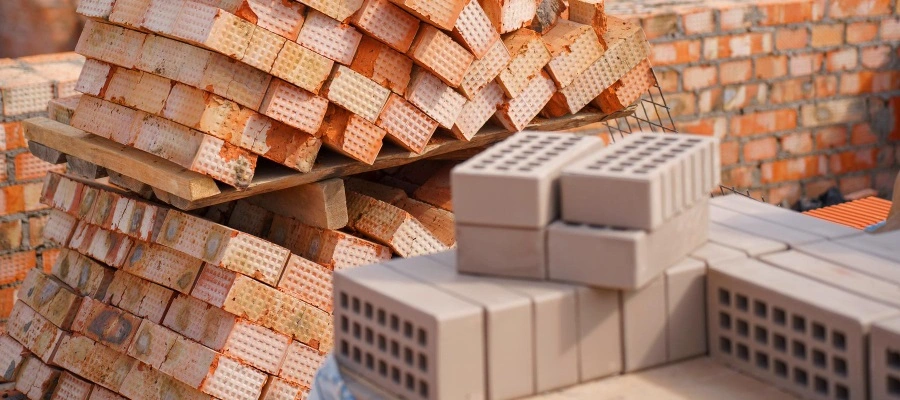Fire safety is a critical consideration in modern construction, influencing everything from building codes to material selection. One of the most crucial aspects of fire safety is using materials specifically designed to resist or withstand fire. These materials, commonly referred to as fire-rated building materials, are essential in minimizing fire risks and protecting property and lives. But what exactly makes a building material fire-rated, and why is it so important? Let’s explore the key factors and criteria that define fire-resistant materials.
Understanding Fire-Rated Building Materials
A fire-rated building material is one that has been tested and certified to resist fire for a specified period. The primary goal of using such materials is to slow the spread of fire, providing crucial time for evacuation and minimizing structural damage. One excellent example of such materials is fire resistant wall panels, which are specifically engineered to maintain structural integrity even under extreme heat.
How Are Fire Ratings Determined?
Fire ratings are typically determined through rigorous testing conducted in controlled environments. Standards such as ASTM E119 or UL 263 outline how materials are exposed to high temperatures and flames to assess their performance. These tests measure several key aspects, including:
- Flame Spread: How quickly fire moves across the surface.
- Smoke Production: The amount and density of smoke produced when burned.
- Heat Resistance: The material’s ability to withstand and contain heat.
- Structural Integrity: Whether the material maintains its form and load-bearing capabilities during a fire.
The resulting fire rating, often expressed as a time duration (like 30, 60, or 120 minutes), indicates how long the material can resist fire exposure.
Key Properties of Fire-Rated Materials
Different building materials offer varying levels of fire resistance, and several factors influence their performance. Let’s take a closer look at the characteristics that make a material fire-rated.
1. Non-Combustibility
Materials like concrete, steel, and certain fire-resistant wall panels are inherently non-combustible. This means they do not catch fire easily and do not contribute to flame spread.
2. Thermal Insulation
Fire-rated materials often include insulation properties to reduce heat transfer. Rockwall fire-rated wall panels, for instance, incorporate materials that can withstand high temperatures without compromising structural integrity.
3. Structural Stability
The ability to maintain form and load-bearing capacity during fire exposure is crucial. For example, reinforced concrete structures are less likely to collapse compared to untreated wood.
4. Low Smoke Production
Even if a material resists fire, excessive smoke production can pose significant risks. Fire-rated materials are designed to produce minimal smoke, reducing the likelihood of asphyxiation during evacuation.
Common Types of Fire-Rated Building Materials
Several types of materials are commonly used in construction due to their fire-resistant properties. Here are some of the most prevalent ones:
Concrete
One of the most fire-resistant building materials available, concrete can withstand temperatures up to 2,000°F. Its density and thermal mass make it particularly effective in preventing heat transfer.
Gypsum Board (Drywall)
Often treated with additives, fire-rated gypsum boards can resist fire for up to an hour or more. These boards are commonly used in interior walls and ceilings.
Fire-Resistant Glass
Specially treated glass, often laminated with fire-retardant layers, can withstand heat and prevent fire spread while allowing visibility and light.
Metal Cladding
Certain metals, like steel, can withstand high temperatures. However, they often need additional insulation or coatings to enhance fire resistance.
Fire-Resistant Wall Panels
Products like Rockwall fire resistant wall panels are specifically engineered to maintain stability during fires, making them ideal for commercial and industrial applications.
The Role of Fire-Rated Materials in Building Safety
Incorporating fire-rated materials into building design is more than just meeting code requirements; it’s about safeguarding lives and property. Whether used in walls, ceilings, floors, or cladding, these materials significantly reduce the risks associated with fires.
Enhancing Evacuation Time
Buildings equipped with fire-resistant materials can contain flames longer, providing more time for occupants to evacuate safely.
Minimizing Structural Damage
Maintaining the building’s structural integrity during a fire reduces the risk of collapse, protecting both inhabitants and rescue personnel.
Compliance with Regulations
Building codes often mandate the use of fire-rated materials, particularly in public spaces, multi-story buildings, and industrial facilities.
How to Choose the Right Fire-Rated Materials
Selecting appropriate fire-rated materials involves considering factors such as building purpose, occupancy load, and local regulations. Consulting with fire safety experts and architects can ensure that the chosen materials meet the necessary standards.
Conducting Risk Assessments
Understanding potential fire hazards in a building can help identify which materials are most suitable. For instance, industrial settings may require more robust fire-resistant solutions compared to residential buildings.
Balancing Cost and Safety
While high-quality fire-rated materials may come at a premium, investing in safety can mitigate long-term costs associated with fire damage and insurance claims.
Final Thoughts
Fire-rated building materials are integral to modern construction, offering both protection and peace of mind. By understanding what makes these materials fire-rated and how to choose the right ones, architects and builders can create safer, more resilient structures. From concrete to fire resistant wall panels, integrating these materials into your project is essential for compliance and safety.

